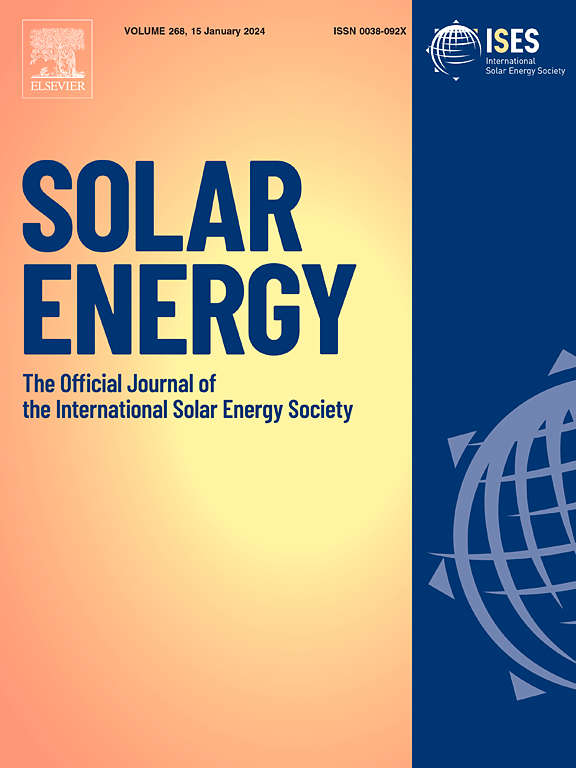改进太阳场定日镜位置控制的定日镜漂移预测模型
IF 6
2区 工程技术
Q2 ENERGY & FUELS
引用次数: 0
摘要
第三代聚光太阳能技术的一个目标是提高中央塔的效率,这是最有前途的太阳能聚光技术之一。中央塔发电厂由数百个定日镜组成,这些定日镜可以将太阳辐射定向到目标上。太阳跟踪的精度受到结构、安装和太阳跟踪系统产生的一系列累积误差的影响。本文介绍了一种实用的定日镜漂移误差预测模型的生成方法。预测年度漂移行为的方法侧重于定日镜确定性不对准和安装误差,这些误差是漂移误差的最重要来源。这些来源是角度参考偏移,基座倾斜和倾斜误差。漂移预测是基于定日镜的漂移曲线是这些单独误差的漂移曲线的线性和的假设。该模型可用于预测定日镜在一年中的任何一天的任何太阳偏角值时的漂移,仅基于一条漂移曲线。该模型为影响各定日镜的漂移预测提供了一种方法,可用于补偿跟踪误差。这种理解允许正确跟踪并提高太阳能场的光学效率,从而提高太阳能塔式发电厂在实际应用中的效率。本文章由计算机程序翻译,如有差异,请以英文原文为准。
Heliostat drift prediction model to improve heliostat position control in solar fields
One objective for the 3rd Generation of Concentrating Solar Power technologies is to improve the efficiency of Central Tower, which is among the most promising solar concentration technologies. Central Tower Power Generation Plants are made up of hundreds of heliostats that redirect solar radiation to a target. The precision of the solar tracking is affected by a series of cumulative errors generated by the structure, the installation, and the sun tracking system. The present work describes a practical methodology for generating a prediction model to calculate the drift errors of a heliostat. The methodology for predicting annual drift behavior focuses on heliostat deterministic misalignment and installation errors due to the most significant sources of drift error. These sources are the angular reference offset, pedestal tilt, and canting errors. The drift prediction is based on the assumption that the drift curve of a heliostat is the linear sum of the drift curves from these individual errors. This model can be used to predict the drift of a heliostat for any value of solar declination based on only one drift curve performed on any day of the year. The proposed model can provide means for drift prediction affecting each heliostat that can be used to compensate the tracking error. This understanding allows for correct tracking and increases the solar field’s optical efficiency, thereby enhancing the efficiency of a solar tower plant in real-world applications.
求助全文
通过发布文献求助,成功后即可免费获取论文全文。
去求助
来源期刊

Solar Energy
工程技术-能源与燃料
CiteScore
13.90
自引率
9.00%
发文量
0
审稿时长
47 days
期刊介绍:
Solar Energy welcomes manuscripts presenting information not previously published in journals on any aspect of solar energy research, development, application, measurement or policy. The term "solar energy" in this context includes the indirect uses such as wind energy and biomass
 求助内容:
求助内容: 应助结果提醒方式:
应助结果提醒方式:


